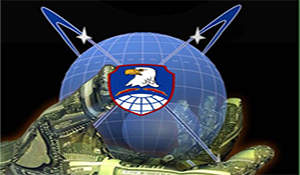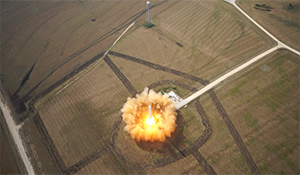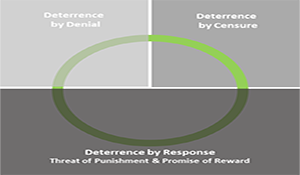
Is US Success Contingent on Dominance in Every Domain
[Q17] As we move into multi-domain conflicts will our success hinge on being successful in every domain or can we lose in one and still be successful in the overall campaign? A Virtual Think Tank (ViTTa)® Report. Author: Dr. Sabrina Polansky (Pagano) (NSI, Inc.) Summary Response Contributors were varied in their responses, with approximately half […]
Continue Reading
National Security Implications of Space-Launch Innovation
[Q13] What are the national security implications of increasingly accessible and affordable commercial launch services? Are these the same for the US and near-peers or states with emergent space capabilities? A Virtual Think Tank (ViTTa)® Report. Authors: Dr. John Stevenson (NSI, Inc.) and George Popp (NSI, Inc.) Summary Response The experts solicited in this effort […]
Continue ReadingBlame, Sway, and Vigilante Tactics
Blame, Sway, and Vigilante Tactics: How Other Cultures Think Differently and Implications for Planning. Author | Editor: G. Sutherlin (Geographic Services, Inc.). Executive Summary Planners require context in order to achieve their goals. While planners understand that colder or more elevated locations have implications for an operation, the capacity to similarly adapt plans and operations […]
Continue Reading
Ally, Adversary, and Partner Use of Space
[Q2] How does each entity in the following categories conceive of space operations for military and commercial purposes? How do they approach space operations and services? Is there any difference in how their commercial ventures (if any) consider security during peace, crisis, and conflict? a. PRC, Russia, Iran, North Korea; b. European Space Agency, Japan, […]
Continue Reading
How Should Space Feature in US Deterrence Strategy
[Q14] How should space feature in US deterrence strategy? How do space operations, policies, and investments impact multi-domain deterrence? What changes to US deterrence thinking are required to incorporate the space domain? To what extent should space adopt deterrence strategies from other domains? Which is the most critical US national security objective: deterring aggression from […]
Continue Reading
Hindrances Between Private and Gov’t Space Sectors
[Q9] What are the biggest hindrances to a successful relationship between the private and government space sectors? How can these be minimized? A Virtual Think Tank (ViTTa)® Report. Author: Dr. Allison Astorino-Courtois (NSI, Inc.) Summary Response The 33 individuals or teams that provided input represent large, medium, and small/start-up space companies;4 USG civil space agencies; […]
Continue Reading
Dominance in a Warfighting Domain Won’t Get Us There
Dominance in a Warfighting Domain Won’t Get Us There: Thoughts on a Comprehensive Approach for Space Security. Author | Editor: A. Astorino-Courtois (NSI, Inc,). Overview Recent statements by senior national security space leaders dubbing space a “warfighting domain” and calling for US space superiority are not a sufficient foundation for achieving a stable security environment […]
Continue Reading
Allied/Commercial Capabilities to Enhance Resilience
[Q11] What opportunities are there to leverage ally and commercial capabilities to enhance the resilience of space services for commercial and national security critical space services? What are the major hurdles to doing so? A Virtual Think Tank (ViTTa)® Report. Author: Dr. Belinda Bragg (NSI, Inc.) Summary Response The importance of strengthening the resilience of […]
Continue Reading
Motivations and Costs to Contest Uses of Space
[Q3] What are the motivations of nation-state and non-state actors (e.g., violent extremists, etc.) to contest use of space in times of peace, instability, and conflict? What are the political, military, environmental, or social costs associated with acting on those motivations? A Virtual Think Tank (ViTTa)® Report. Author: Dr. John Stevenson (NSI, Inc.) Summary Response […]
Continue Reading
(Outer) Space: An Exploration of Definitional Issues
[Q1] Are there any contentious space terms or definitions, or are there any noticeable disagreements amongst space communities about appropriate terminologies and/or appropriate definitions for terms? What are the common understandings and uses of space-related terms, definitions, classes and typologies of infrastructure and access? For example, how do we define different classes of space users […]
Continue Reading